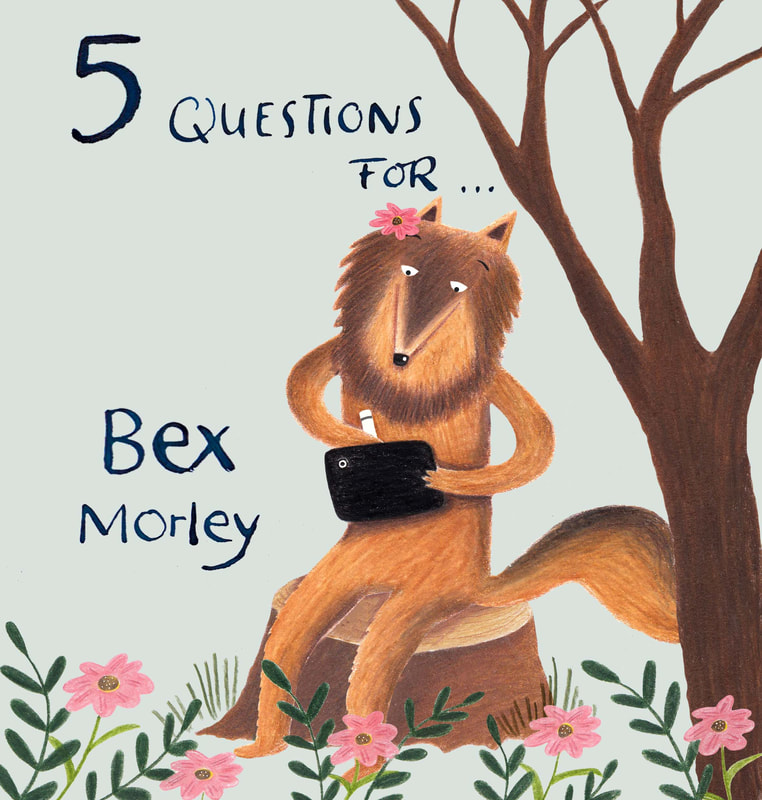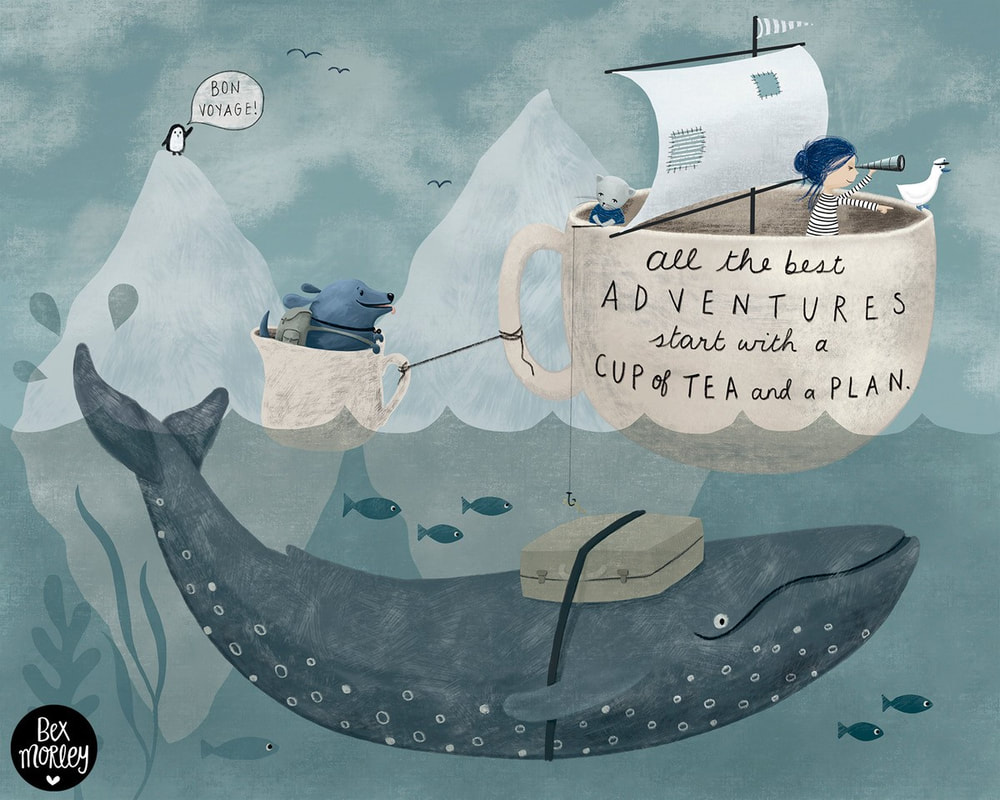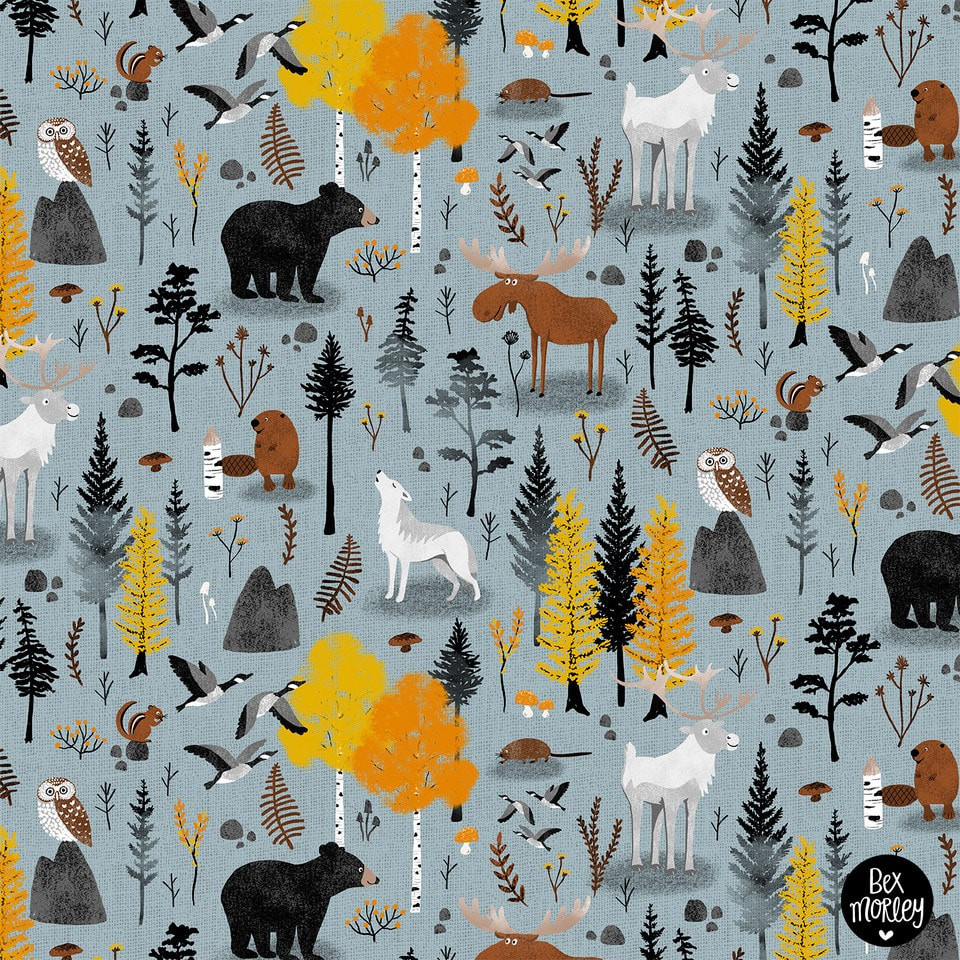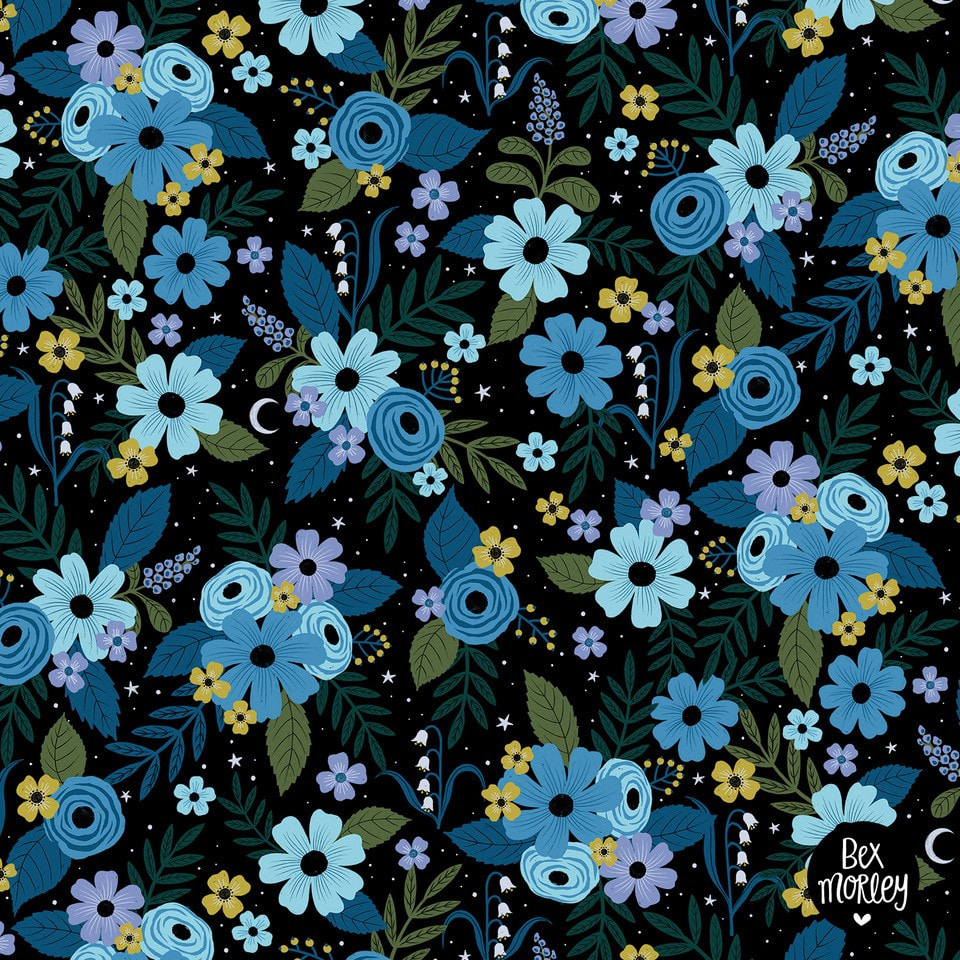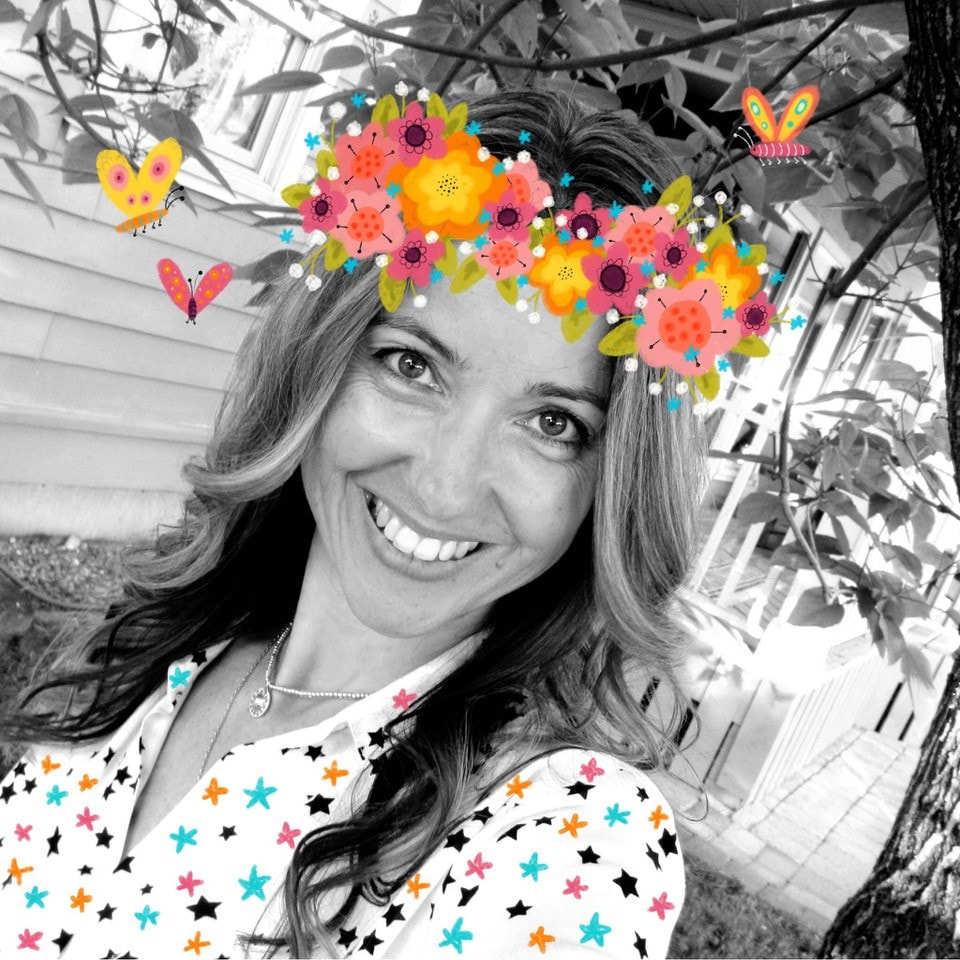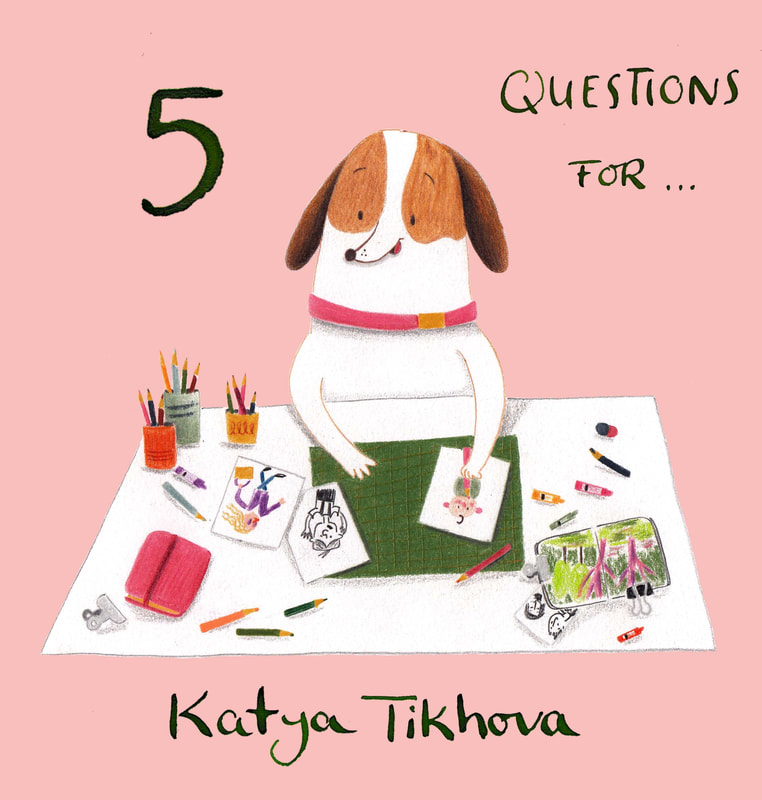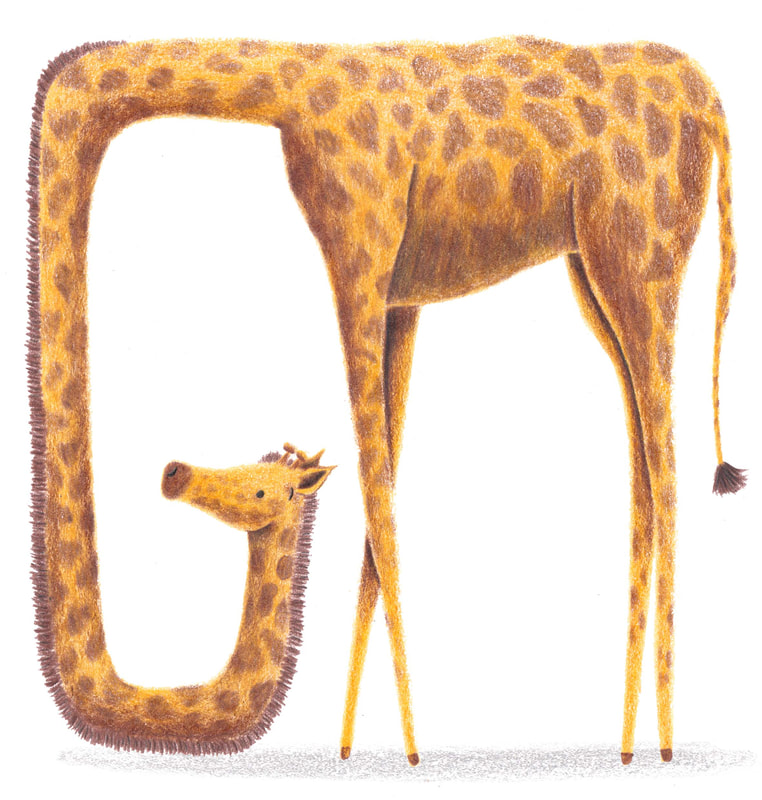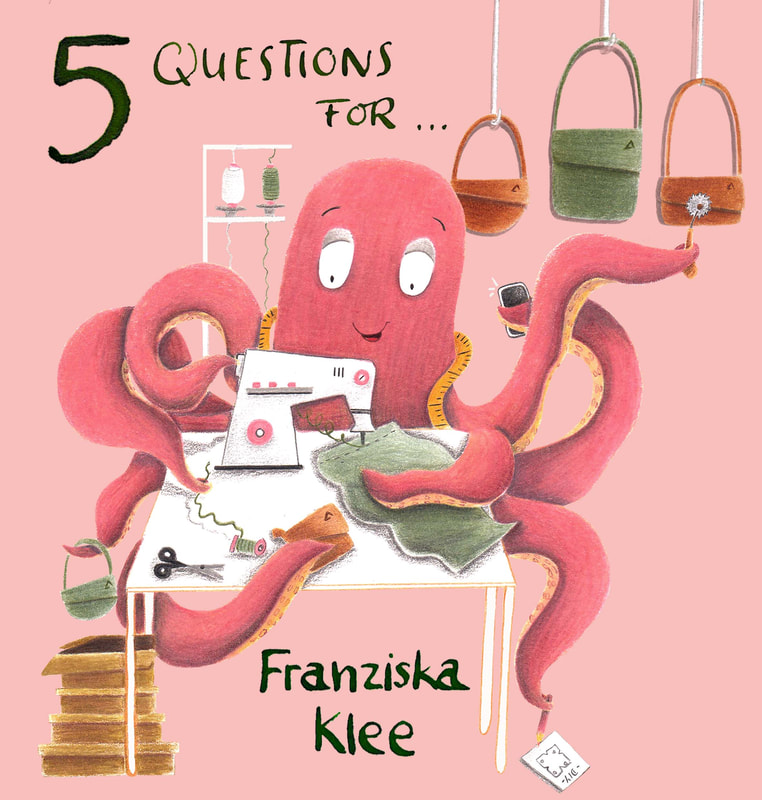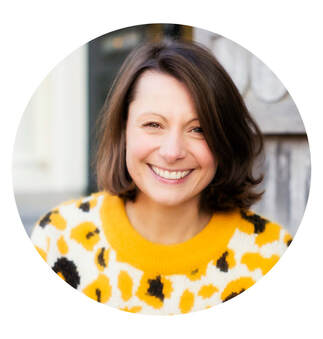commercial art. After graduating with a major in music, Bex surrendered her artistic ambitions to office jobs and family and eventually set up a jam-making business. It was during a personal crisis that Bex discovered that there was indeed a place for the colourful, botanical and character art she had been making throughout her youth. Online, she not only discovered artists who were working in similar styles but also stumbled upon the classes of Make Art That Sells. She quickly enrolled and after a steep learning curve that would last a couple of years, Bex got an agent. Her first commissions soon followed and she now creates joyful patterns and illustrations for stationery, fabrics and home décor. 1. You, me and so many other people have stopped making art because of a comment or criticism from a teacher. What would you like to say to young people who are doubting themselves because of outside feedback? This is a really tough one because most of us go through school trusting that our teachers are always right. It's only as adults we realise that teachers don't actually know everything, especially in creative subjects which are so much about individual opinions. So, my advice would be to follow your heart and your instincts when it comes to any creative pursuit. Learn to trust your own judgement and create things that you truly love and would want to buy for yourself. Don't pigeonhole yourself or give up on your dreams too soon. Keep creating, exploring and sharing and you will soon find the people who appreciate your work, which will give you the confidence and motivation to keep going. Having the internet now makes it so much easier to find your people. They are out there! 2. There exists this idea that you are only a ‘true’ artist if your art is dark, deep and comes from a place of suffering. Why do you think art that is created from a place of joy is so undervalued? I think there is a kind of weird romanticised image of the struggling, starving, slightly mad, emotionally unstable artist. Their art is often considered 'more serious'. Which I suppose is true if you consider that miserable art is pretty serious, but that doesn't make it any more valid as an art form. I'm sure some people really resonate with that, but it's not really for me and it's definitely not something I'd want in my home. Whatever someone is feeling, it will come through in their artwork and that's what they're putting out into the world. That is totally fine - creating art is a fantastic way to process all emotions - but it doesn't make the art itself any better or worse. Personally, I like to create joyful art most of the time and I'm more attracted to joyful art. It definitely sells better in the surface design world because, not surprisingly, most people want to be surrounded by things that make them feel good. So I would ask, does the world need more darkness and suffering? Or more joy? Which really has the greatest value? 3. You said somewhere that ‘it’s easier to get out of your comfort zone when you are already in a place of discomfort’. Can you say a bit more about that? Staying safe and conserving energy are two of the most basic human survival instincts. So when we feel comfortable our subconscious will do everything in its power to maintain that comfort, and avoid any risk or wasted energy. That means it's really hard to get out of our comfort zone unless something gives us a push. We can even feel a strong resistance against things that aren't risky at all, but might involve a teensy bit of effort or uncertainty - our subconscious will put the brakes on, just in case. We will then attempt to justify it to ourselves with logic, excuses and self-limiting stories, in order to make ourselves feel better. But actually, over time, it destroys our confidence. Conversely, if we don't feel comfortable where we are in life (for me it was a toxic marriage), then we don't feel quite so much resistance to taking a risk because we don't feel safe anyway. Admittedly it still took me WAY too long to make those changes because it's still scary to do something different and unknown, and my self-confidence was very low. It actually had to become more scary to stay with him than to venture out into the unknown, by myself, as a single Mum. Yikes! Once I'd left, of course, it felt so great that I wish I'd done it much sooner. What was interesting though is that it also made me feel more confident in taking other risks in life and in my career. It was like I'd strengthened my self-confidence muscle by being brave. So, I'm trying to learn from this experience. I'm trying to notice when I negotiate with myself and make excuses. I now know that it's really just my fearful subconscious trying to keep me safe and that by being brave, it will increase my self-confidence and that feels fantastic! I find it can help to trick my brain somehow into doing the things I feel resistance to. Sometimes I will challenge myself to do something uncomfortable for just 1 minute (usually once I've started I'll carry on). For some things, it can be helpful to have an accountability/competition partner to keep me on track (e.g. I'm much better at sticking to an eating plan if I'm competing with my boyfriend). Or sometimes I just plan a reward for myself once I've finished. Really it's whatever works. I can assure you though, if you challenge yourself to do something uncomfortable every day, your self-confidence will really grow. And that feels wonderful. 4. What is one valuable lesson that you learned during the past year? A valuable life lesson I learned is that I'm not responsible for other people's feelings or reactions. A valuable art lesson I learned is to find some way to stay in tune with what I love and am passionate about. I recently started an art scrapbook where I stick in images or quotes that give me all those good feels. Having a physical object is a nice change from all the digital art I create. I find that it's really easy to be distracted by what everyone else is doing online and although I love Pinterest, it can be totally overwhelming. So this scrapbook serves as a useful reminder to stay focused on my own journey and stay true to my own influences. It brings me so much joy. I think of it as a Marie Kondo exercise for my creativity because it sort of clears out all the mental clutter and noise. 5. What advice would you give to older women who would love to change their career but worry that it’s too late? It's never too late to change your career! If there is something you love and have always wanted to do, stop waiting and just start. If you regret not starting sooner, why would you wait longer? Start now so that you don't have that same feeling of regret in 5 years’ time. Women often have to put their lives and careers on hold for their families so I think it's common for us to start our second careers later in life. If you have the will and the energy, anything is possible and art, in particular, is not a career that has any particular age advantage. If you want to do something but are feeling that uncomfortable resistance to getting starting, maybe check out my tips in question 3 above for overcoming that discomfort. Lastly, what is your spirit animal and why did you choose it?
5 Questions for ... is a blog series featuring creative self-starters, artistic late bloomers and those who have created a thriving career by following their passion. Is there someone you know or who inspires you that fits that description? Do tell me about them!
|
About MeHi, I'm Chantal Valerie. I'm a writer and self-taught illustrator. I am inspired by late bloomers and creative self-starters (I only started drawing at the age of 34) and since I believe they deserve more visibility, I started my blog series ‘5 Questions for …’.
Categories |

